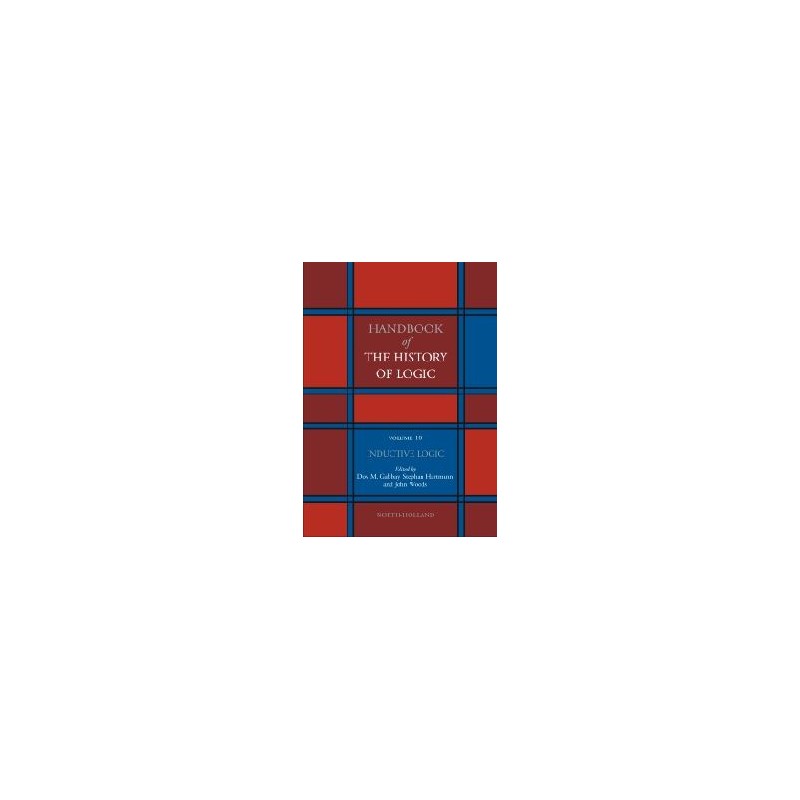- Obecnie brak na stanie



This volume is number ten in the 11-volume Handbook of the History of Logic. While there are many examples were a science split from philosophy and became autonomous (such as physics with Newton and biology with Darwin), and while there are, perhaps, topics that are of exclusively philosophical interest, inductive logic - as this handbook attests - is a research field where philosophers and scientists fruitfully and constructively interact. This handbook covers the rich history of scientific turning points in Inductive Logic, including probability theory and decision theory. Written by leading researchers in the field, both this volume and the Handbook as a whole are definitive reference tools for senior undergraduates, graduate students and researchers in the history of logic, the history of philosophy, and any discipline, such as mathematics, computer science, cognitive psychology, and artificial intelligence, for whom the historical background of his or her work is a salient consideration.
. Chapter on the Port Royal contributions to probability theory and decision theory
. Serves as a singular contribution to the intellectual history of the 20th century
. Contains the latest scholarly discoveries and interpretative insights
Introduction (Dov Gabbay, Stephan Hartman and John Woods)
Induction before Hume (J. R. Milton)
Hume and the Problem of Induction (Marc Lange)
The Debate between Whewell and Mill on the Nature of Scientific Induction (Malcolm Forster)
An Explorer upon Untrodden Ground: Peirce on Abduction (Stathis Psillos)
The Modern Epistemic Interpretations of Probability: Logicism and Subjectivism (Maria Carla Galavotti)
Popper and Hypothetico-deductivism (Alan Musgrave)
Hempel and the Paradoxes of Confirmation (Jan Sprenger)
Carnap and the Logic of Induction (Sandy Zabell)
The Development of the Hintikka Program (Ilkka Niiniluoto)
Hans Reichenbach's Probability Logic (Frederick Eberhardt and Clark Glymour)
Goodman and the Demise of Syntactic and Semantics Models (Robert Schwartz)
Development of Subjective Bayesianism (James Joyce)
Varieties of Bayesianism (Jonathan Weisberg)
Inductive Logic and Empirical Psychology (Nick Chater, Mike Oaksford, Ulrike Hahn and Evan Heit)
Inductive Logic and Statistics (Jan-Willem Romeijn)
Statistical Learning Theory (Ulrike von Luxburg and Bernhard Schoelkopf)
Formal Learning Theory in Context (Daniel Osherson and Scott Weinstein)
Mechanizing Induction (Ronald Ortner and Hannes Leitgeb)
Index
Złącze terminalowe ARK sprężynowe 3-pinowe o rastrze 3,5 mm, nierozłączalne.
Brak towaru
Zestaw NVIDIA z układem CPU NVIDIA Carmel ARMv8.2 oraz układem graficznym NVIDIA Volta. Posiada pamięć RAM DDR4 8GB, interfejs Ethernet, DisplayPort, HDMI oraz złącza kamery MIPI-CSI. 945-83518-0005-000
Brak towaru
Brak towaru
Zmontowany 2-kanałowy termometr MIN-MAX z alarmem. AVT1999 C
Brak towaru
John Ross
Brak towaru
Brak towaru
Kompaktowy zestaw rozwojowy z serii M5StickC wyposażony w ESP32 Pico oraz wyświetlacz, sprawdzi się w projektach związanych z IoT, jako narzędzie edukacyjne STEM lub w urządzeniach typu "wearable". M5Stack K016-P
Brak towaru
Brak towaru
Brak towaru
Brak towaru
Brak towaru
Brak towaru
Moduł GY-GPS6MV1 to płytka zawierająca układ odbiornika GPS NEO-6M firmy U-blox. Na płytce znajduje się również m.in. bateria podtrzymująca RTC, złącze do anteny (U.FL), stabilizator napięcia i wyjścia sygnałów UART
Brak towaru
Pomarańczowy filament 1,75 mm 0,85 kg Easy PLA firmy Fiberlogy
Brak towaru
Moduł z silnikiem wibracyjnym oraz możliwością generowania 123 różnych trybów wibracji. Płytka została wyposażona w złącze Grove i komunikuje się przez interfejs I2C. Seeed Studio 105020011
Brak towaru
Brak towaru

